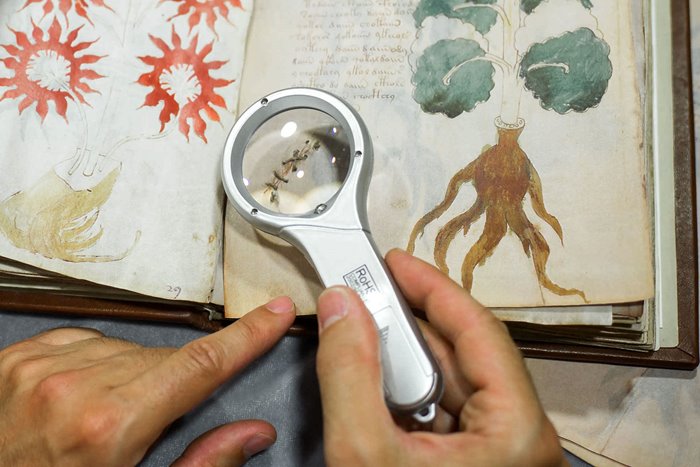The mystery of the Voynich manuscripts; The mysterious book that was never read
The Manuscript Known As The Voynich Manuscripts Is A Mysterious And Incomprehensible Book That Has Frustrated Great Linguists And Cryptologists For At Least The Last Three Centuries.
There is probably a no better example than a rare book of the original Voynich manuscripts. As far as is known, this work is an original copy with no duplicates. Therefore, according to the Ethical Capital website, we are facing a very, very rare manuscript that is hundreds of years old and contains the world’s secrets.
Radiocarbon dating (done in 2009) showed that the book dates back to the early 15th century. You might think a book with these coordinates must be worth a lot, but putting a price on this book is not a particularly easy task since no one has yet been able to understand its contents.
And the most exciting thing is that no one even knows who the author is. So a book without an author and no one knows what is written in it can be completely worthless. However, some argue that at least the value of its 600-year-old leather cover should be considered. (I suggest you download the full version of Voynich’s manuscripts from here and turn the page before reading the rest of the article .)
Voynich manuscripts, a mysterious book.
Voynich manuscripts are 225 mm long and 160 mm wide, and 5 cm thick. Voynich’s manuscripts have a total of 246 pages and contain 170,000 syllables. Various investigations, especially the shape of castles painted on some pages of the book, show that the book was most likely written in northern Italy.
The only existing copy of this manuscript has been kept since the late 1960s in the Bainiki Rare Books and Documents Library of Yale University in New Haven, Connecticut, USA.
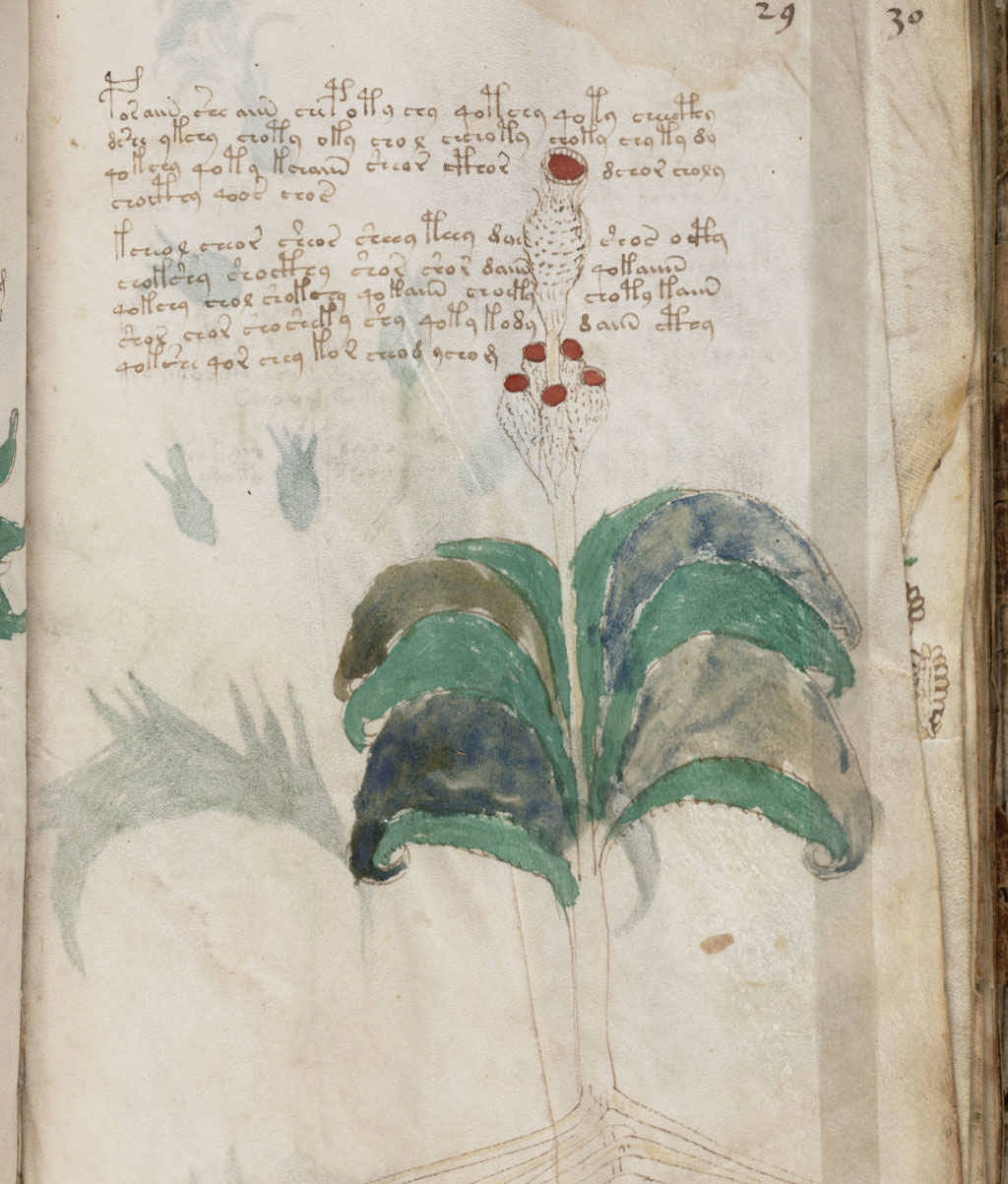
An image of the plant section of the Voynich manuscripts.
According to the New Yorker magazine, when you open the calf leather cover of the calligraphic book, you will reach the parchment sheets and see mysterious writings in brown ink with strange patterns and designs of plants. Although the book is written and bound in the usual way of the Middle Ages, the font and shape of the letters and its language are the only inventions of its author. The letters are well-drawn and circular; the text is written from left to right and from top to bottom (like all European languages). Some researchers refer to this enchanting language as the Voynich language, although there is much debate.
The exciting thing about Voynich’s language is that its sentences are never repeated. More interestingly, there is no sign of correction or modification. The alphabet of this language is also limited, and a kind of irregularity can be seen in the paragraphs as if it conveys thoughts to its readers.
Roger Bacon left the elixir of life in the Voynich manuscripts.
The first half of Voynich’s manuscripts are full of plant drawings. None of the plants look natural, although they are made of standard plant parts such as green leaves, stems, and roots. For this reason, researchers call it the plant part. Such motifs are common in old books, and many illustrated texts similar to Voynich can be found in the British Museum library.
In the next section, you can reach the celestial tables and astronomical circles, similar examples of which can be seen in most medieval zodiac texts. Although it is possible that these signs were transcribed from a calendar, they still bear no resemblance to any calendar. Hence, calling this part astronomical is a bit of an exaggeration.

Next, we reach another part known as the bathing section. In this section, you see a lot of women in ponds that are connected by pipes. These interesting drawings are repeated on many pages of the book. According to the Paris Review, the motifs of the Voynich manuscript are very similar to some alchemical works. Sometimes alchemical texts use bath paintings as an allegory of chemical solutions.
For this reason, some believed that the author of this work was Roger Bacon, a 13th-century alchemist and naturalist – a famous magician. It is said that Bacon discovered the elixir of life and left it in code in a 200-page book for posterity. In the final part of the manuscript, we also reach pages almost similar to pharmaceutical instructions.
The long journey of the Voynich manuscript
Voynich is not a word from the Voynich Manuscripts but the name of one of its owners. Wilfred Michael Voynich was a rare and antique book dealer who bought this manuscript in 1912. When Voynich bought these manuscripts, they were accompanied by a letter from Johannes Markus Marquis (1667-1595), a scholar from Prague. He claimed the book was sold to the Holy Roman Emperor Rudolph II for 600 ducats.
The book has been circulating in Prague for some time. At first, it was thought that the book’s author was probably Roger Bacon. Voynich later said that John Dee, an occultist, and philosopher, may have been the book’s author. Voynich came to this conclusion after reading a historical novel. Perhaps the story becomes even more mysterious when we learn that the first confirmed owner of the Voynich manuscript was Georg Barchius, a 17th-century alchemist from Prague.
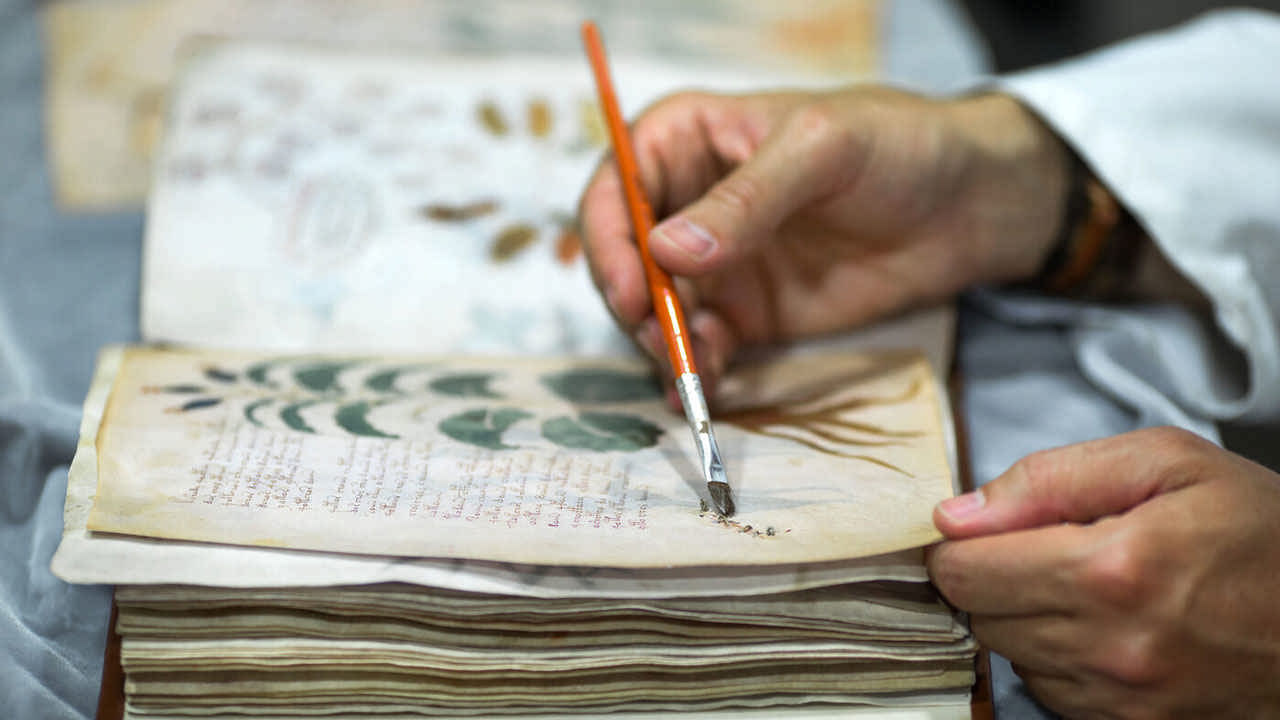
Nowhere in Voynich’s manuscript is there any sign of correction or correction.
Desperate to unravel the book’s mysteries, Barchius wrote to one of the great Renaissance linguists and hieroglyphics experts: “Here in my library, there is a certain enigma of the Sphinx, which has for years occupied a useless space.”
In the biography of Wilfred Voynich written by Arnold Hunt, the author considers him a strong and strange character. Voynich was born in 1864 in Telsia (now Lithuania, which at that time was a part of the Russian Empire bordering the Grand Duchy of Poland) and in a Polish family. Barchius described the manuscript as writing with unknown syllables and speculated that it was probably a medical text in its entirety. After 1670, the book’s historical trajectory was strange until Voynich bought it.
He had an extraordinary talent for learning languages, and it is said that he spoke 20 languages fluently. In 1885, he was arrested in Kono (Lithuania) for being a Proletariat Party member and exiled to Siberia for five years without trial. Voynich studied there a lot and finally managed to escape from there. During this time, Voynich traveled a lot, and later, by selling his vest and glasses, he earned the cost of a boat trip from Hamburg to England.
Wilfred Voynich believed that his incomprehensible book contained genuine wisdom.
There he was part of an intellectual circle led by Sergei Kravchinsky, known as Stepniak, a famous Russian writer and revolutionary. As Vučić got older and after many adventures, he decided to pursue an everyday life; hence, he decided to enter the profession of book broker. A job in which he apparently had tremendous talent and soon became one of the most famous names in the field of antique and rare books in England and throughout Europe and even America. He is even said to have accidentally (and remains uncertain) sold forged manuscripts to the British Museum several times.
Hunt called Voynich a passionate idealist and, simultaneously, a broken-hearted and painful man. He points out: “In his life, Vinich never forgot the wounds he saw in his youth. If he wrote somewhere; Here I am, I have a sword, I have a sword, I have a bullet.”
In 1903, this congregation decided to sell a large number of texts from the collection of the Roman College to the Vatican. One of them was Voynich’s manuscripts. It took about nine years to sell the books.
Vilified Voynich was also able to secretly obtain some of these books before they fell into the hands of the Vatican library authorities. No one knows precisely what historical path the Voynich manuscripts took until they finally fell into the hands of a Jesuit order.
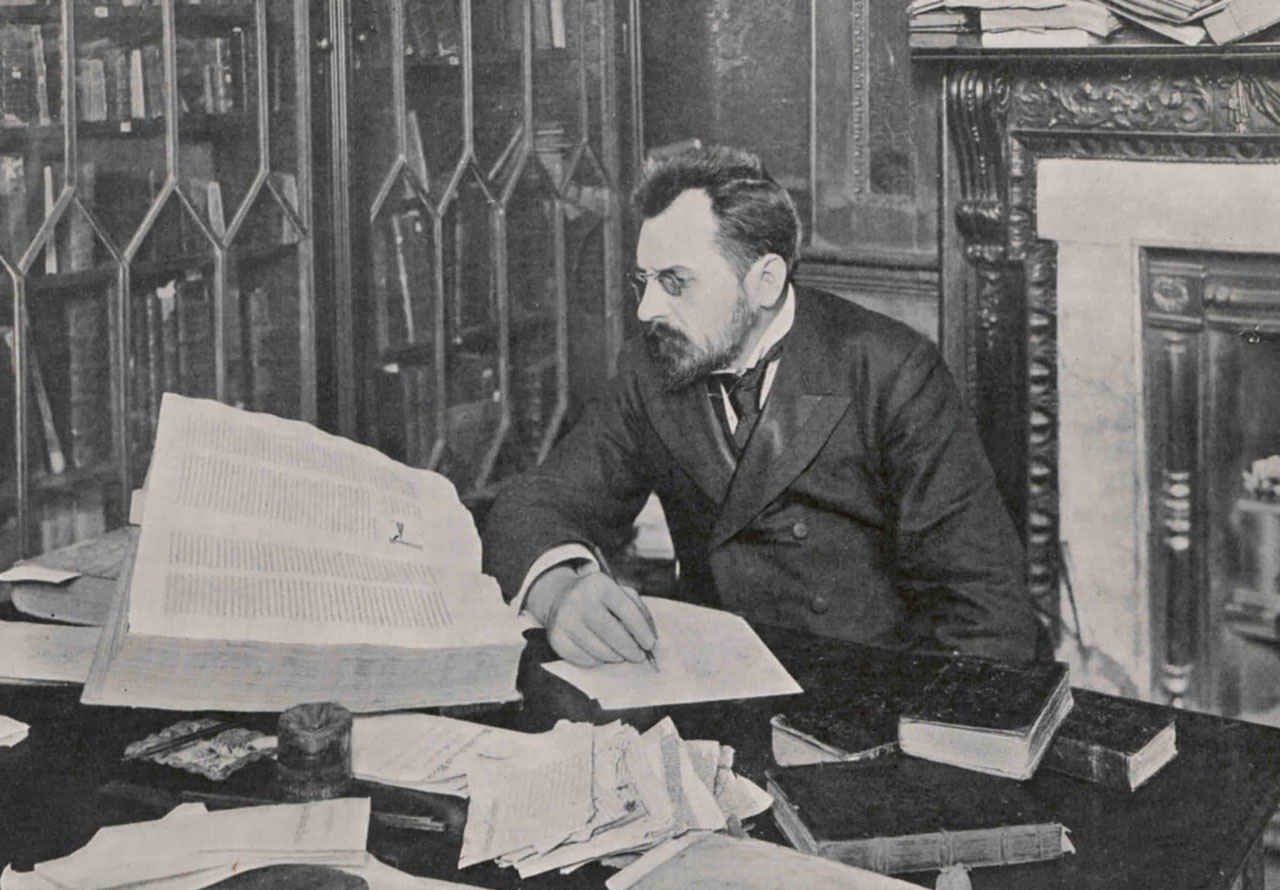
Wilfred Michael Voynich, linguist, revolutionary, and seller of antique and rare books
Voynich believed that his incomprehensible book contained genuine wisdom. He even said in an interview with the Times newspaper: “When the time comes, I will prove to the world that the black magic of the Middle Ages was far ahead of the science of the 20th century in its discoveries.” At least that’s what he said in the book sales advertisement in America.
Despite decades of efforts, Walifred Voinich himself could not reveal the secrets of this book. After Wilfred Voynich’s death, his widow, Ethel Voynich, bequeathed the manuscripts to her friend Anne Neal. He finally sold this manuscript in 1961.
Voynich’s manuscripts then fell into the hands of Hans Kraus, a bookseller from New York, who hoped to make a substantial profit by selling them. But when Krause failed to sell the book after several years of trying, he donated it to Yale University in 1969.
Attempts to decipher the mystery of the Voynich manuscripts
Everything we know about the Voynich manuscripts (except the results of radiocarbon dating) is only the result of countless speculations by researchers, cryptographers, and linguists who have studied the book over the last three centuries. In the meantime, cryptologists have tried to decipher the book’s contents for decades. Many have tried to find the meaning of the book’s writings, but even though the inexplicable secrets of Voynich’s manuscript stole sleep from their eyes to their amazement, they did not find any meaning or content in the book.
Computer calculations and artificial intelligence have also been subjected to this mysterious text in recent years. Some believe that Italian Jewish doctors wrote this book because the painting of women in the bath is very similar to mikvehs (traditional Jewish baths). According to another theory by Dr. Gerard Cheshire from the University of Bristol, England, these manuscripts must have been written in the Peshorumi language, that is, languages that are a mixture of Latin and other medieval cultures after the collapse of the Roman Empire.
Today, Romance languages include Galician, Catalan, Spanish, Portuguese, French, Romanian, and Italian, but these languages were very different in the Middle Ages from what we know today. One of the critical questions while trying to decipher this mysterious book is whether its symbols represent a code for a known language or they are all syllables of a completely unknown language.
The impenetrable mysteries of the Voynich manuscript stole sleep from the eyes of some of the greatest minds in history.
Some cryptologists have attributed the origin of the text to Leonardo da Vinci. Some say Dominican nuns wrote the Voynich manuscripts. And some consider it an obscure form of Egyptian hieroglyphics that remains undeciphered. Some insist that aliens wrote this manuscript. According to the podcast Stuff, You Should Know, some people consider the text to be the work of a group of medieval magicians (the author’s favorite theory) who recorded the secrets of their secret society and black magic. The sorcerers and sorcerers of this community have passed on their excellent knowledge to the next generations. But when the tradition of magicians began to decline, this language was forgotten forever in the heart of history.
Some believe the book was written in code to keep its contents hidden from the church. Others consider it a hoax of medieval charlatans. If so, the creator of this fantastic work must have been incredibly creative and imaginatively ingenious, as the book’s unique patterns and symbols have dazzled some of the brightest minds in history.
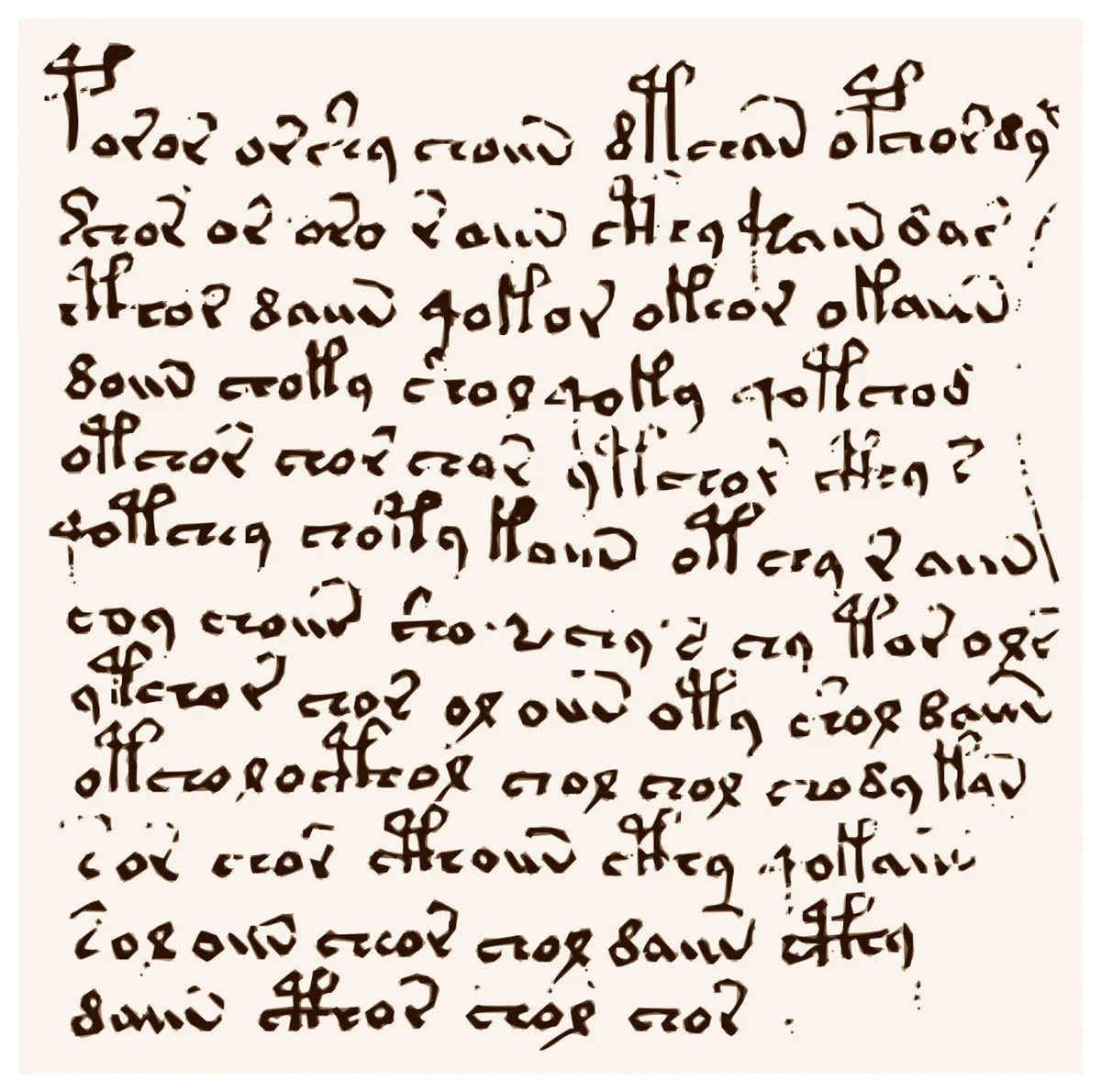
The shape of the circular letters of the Voynich language is sometimes used in the Elvish language that G. R. R. Tolkien, the famous author of fantasy works, finds a similarity.
However, whoever wrote the book, not a single word of it is found in any ancient manuscripts. The Medieval Academy of America even held a two-day conference during which scholars investigated the origins and history of the Voynich manuscripts. One of the most important questions addressed at this conference was the possibility that the manuscript was one of the lost texts of the Aztecs.
One of the greatest minds who worked on deciphering the manuscript was William Frederick Friedman, a famous American cryptographer. Most famous for breaking codes in the US military, he was one of the first to use a computer to analyze Voynich’s text. Friedman and his wife Elizabeth, a cryptologist, got acquainted with the book in 1925.
This pair of master cryptographers worked on this project for forty years. Friedman and his colleagues were among those who succeeded in deciphering the purple code of the Japanese during World War II. Friedman also served as a War Department code-breaking analyst and head of the Signal Intelligence Service in the 1940s and 1950s. Still, Voynich’s manuscripts were apparently beyond the intellectual capacity of even a genius like Friedman.
Internet users have paid particular attention to Voynich’s manuscripts in recent years. For example, some social networking site Reddit users have suggested that the manuscript may be part of a fantasy world (similar to what J.R.R. Tolkien did in his works by creating different languages). But there is still no sufficient justification for preparing such an expensive handwritten book. Another Reddit user says the Voynich manuscript may have been one of the lost Mayan notebooks. Anyway, although you can find some severe scientific work among the contents of Reddit, most of the content of this social network revolves around entertaining speculations.
A secret that remains unsolved
You may think an ancient and clumsy book full of strange drawings without meaning will soon be forgotten. But Voynich’s manuscript has stood the test of time and fascinates us. There is no doubt that countless historians, researchers, and cryptologists will continue to uncover the secrets of this book.
Talking about the Voynich manuscripts has become a tradition, and every year (or however many years), the claim to decipher the book makes headlines. Perhaps there is no secret that anyone wants to discover. But according to what Reid Johnson, the New Yorker writer, writes, this fact has a scientific reason and is emotional. Many researchers, some of them have even spent decades of their lives unraveling the secrets of this book; it would be unfortunate to discover that the book’s contents are worthless.
At the heart of each ceaseless attempt to decipher the Voynich manuscripts, there is a deep and hidden desire to find a transcendent and precious meaning. We will surely be disappointed that Voynich is nothing more than a jumbled text, shopping list, or even a treasure trove of 15th-century monks’ sarcastic jokes. For this reason, despite a lot of efforts to decipher the book’s content, we like that no one can solve the mystery of the Voynich manuscripts.
Wilfred Voynich believed that the decipherment of this manuscript would add to its value, but the very illegibility of the book gave it a special place. Undeciphered, the Voynich manuscript will forever remain a mystery and is not supposed to have any definite meaning.










